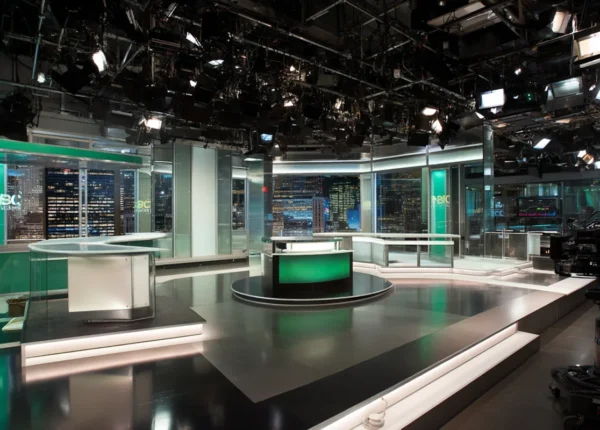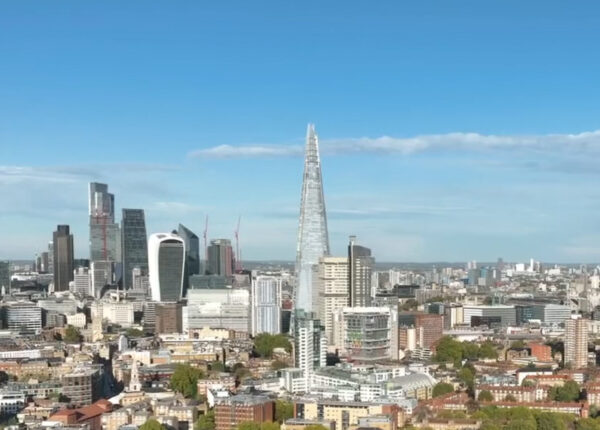The “wrong kind of snow”…
In the winter of 1991, the Director of Operations at British Rail had the misfortune to appear on an early morning radio programme to discuss the difficulties the rail network was experiencing with weather conditions. He tried to explain that there were particular problems with the type of snow falling across the country; it was unusually powdery, necessitating the use blowers rather than snow ploughs.
Unfortunately, the interviewer responded to this suggestion by saying that what he was hearing was that it “was the wrong type of snow”. To a frustrated public and for the national media, this was immediately adopted as a metaphor for the rail network’s failures of both communication and operation. Today we are seeing something rather similar in the reaction to the surge in inflation that is rightly preoccupying the public, governments and the markets.
…and the wrong type of inflation?
The developed world has witnessed levels of inflation not seen since the 1970s. For those who did not live through that earlier period, it is hard to realise quite how different and difficult an environment it was. Most political and economic discussion revolved around wage price spirals and the adequacy or otherwise of the various price and income control policies which were introduced, in many cases imposed by law.
The economic damage that was caused during this crisis period eventually ushered in a new anti-inflationary economic orthodoxy, typified by Ronald Reagan and Margaret Thatcher, and implemented with the help of independent central banks, epitomised in the person of Paul Volcker, as chairman of the Federal Reserve. It also led to a sea change in labour laws and the effective demise of collective bargaining in the Anglo-Saxon economies.
Allied to this were supportive demographics and increased globalisation which led to what has been called the ‘great moderation’, a period characterised by inflation on a generally falling trend for almost 40 years, and a consequent persistent decline in interest rates.
Given this backdrop the current surge in inflation has given much pause for thought to market participants and commentators alike. For the first time in a generation, we are faced with a new series of policy questions.
- is what we are seeing a return to the dysfunctional labour market of the 1970s?
- is the rise in inflation solely the result of extended loose monetary policy or broader factors?
- how important is the recent reversal in secular demographic and globalisation trends?
- how much of the inflation stems from the post-Covid economic surge and the war in Ukraine and tight energy supplies?
Understanding the different root causes is critical for investors, since there is a natural desire for the financial markets to return to their post-GFC investment framework, in which central banks appeared to underwrite asset valuations by injecting liquidity whenever stock market looked like sustaining meaningful declines. This framework was reliant on benign or negligible inflation and the willingness of the bond market to accept negative real returns.
So long as these conditions remained and the central banks were willing to be the marginal buyer of government debt, this benign but fragile equilibrium could be sustained. It has become deeply embedded in the investor psyche. However, because inflation cauterizes the central banks, its resurgence potentially sounds a death knell for the assumption that this comfortable investing environment can continue indefinitely.
If it becomes evident that we have reached the end of the low interest rate, dormant inflation world which investors have become accustomed to since the global financial crisis, we will also have to confront the fact that such a change will fatally undermine the rationale for the high valuations that we have seen across all asset classes in recent years.
Determining what kind of inflation we are seeing is critical to the future path of interest rates and economic growth and therefore critical also to understanding where the prices of assets are most likely heading. Great care needs to be taken to distinguish what is transitory and what is more deeply embedded and hence more consequential for markets.
Let’s take the questions posed earlier in turn.
Labour markets
Whilst labour clearly has a stronger hand in negotiations over pay this year, to date this looks to be driven more by market conditions than by any meaningful change in law to give labour more collective bargaining power. Whether this remains depends upon how the political backdrop evolves, but for the moment this is not a dominant factor.
Monetary policy
It is highly likely that the suppression of interest rates over the past decade has contributed to inflation. One of the stated purposes of the ‘unconventional’ monetary policy adopted by central banks after the global financial crisis was to keep asset prices high. That this has been achieved is self-evident.
While the intended aim of policy was to encourage investors to take more risk, a by-product has been that the resultant increase in wealth has driven higher consumption. However, since wage growth has remained subdued until now, it suggests that the link between monetary policy and wages and prices was either not a direct causal one, or that there were other forces at work mitigating the effect.
Demographics
Changing demographic factors that affect demand for equities and bonds, such as an aging population in many countries, are coming into play, but these global shifts are both predictable and slow moving. There is no reason to believe they have contributed to what has been a sudden surge towards higher inflation.
Ukraine and supply side issues
The causal link between higher inflation and the removal of Covid-related restrictions, tight energy supplies and the Ukraine war is obvious. Logistical bottlenecks and capacity shortages driven by mothballing capacity during Covid take time to be resolved. Higher oil and gas prices are a direct result of both the Ukraine and falls in E&P activity. Climate conditions have also contributed to food inflation, as have declining grain exports from the Ukraine.
Together these factors account for a substantial proportion of the spike in inflation. Perhaps as much as half of the current rise in headline CPI (Consumer Price Index) can be attributed directly to these factors. It is likely that these effects will not only drop out but reverse in the coming twelve months.
The US CPI could easily fall below an annual rate of 3% if oil were to drop back to the $60-70 a barrel range. In the last few weeks markets have welcomed the perceived peak in headline CPI and expectations of falling headline inflation have contributed to renewed enthusiasm for assets, an enthusiasm rooted in the hope for a return to the ‘old’ investing framework.
So what type of inflation is it?
This is where we get to the question of the ‘right’ and ‘wrong’ type of inflation. The headline CPI figure includes both temporary effects and potentially more pernicious long-term ones. Using the type of snow analogy, the equivalent ‘powdery’ snow inflation is the result of the short-term post-Covid/Ukraine factors. Some of these will be resolved by time, some by supply side responses and some by political negotiation.
None of these however will be resolved directly by interest rate rises, except to the extent that they may help to bring down demand to offset the supply constraints. The caveat here is that central banks are naturally concerned that a labour market response to the inflation spike will set in train a wage price spiral.
The more ‘normal’ snow is the underlying core rate of inflation, which has risen significantly above central bank comfort levels. This is where conventional monetary policy is relevant, both in terms of cooling those overheated markets and attempting to prevent inflationary psychology becoming embedded in the labour market.
The recent rises in interest rates are seen by some observers as being ‘restrictive’, but this is not historically accurate. From a longer-term perspective, having been suppressed for so long, interest rates still sit at the bottom of their historical range. A more appropriate description would be that what we are seeing is normalisation, or an ending of ‘unconventional’ policy.
This is not to say that raising interest rates will have no effect on the economy, simply that the current regime could not yet be described as ‘tight’. The coming fall in the CPI will largely be due to the direct and indirect effects of energy price rises dropping out of the year-on-year figures. Even if the CPI does fall back to its 2% target, this will be a one-off effect, not a permanent change in the underlying rate of inflation, much as markets would like to believe in such an outcome.
Whatever happens to the headline inflation rate, underlying inflation is likely to remain much more persistent and could easily sit in the 4-6% range for some time. Once the transitory factors have been eliminated, headline CPI will converge on core inflation. Central banks are well aware of this and will need to keep policy trained on the persistent inflationary factor.
Investment implications
Markets cannot just look to headline inflation indefinitely. Eventually we can expect to see a majority view emerge that if core inflation is going to be 4% or more for an extended period, then the Fed cannot justify cutting short rates or revert to buying government bonds to suppress yields. It is more likely that rates will continue to rise, meaning that attention will then shift to the chances of a recession.
Rising interest rates take time to work their way through the system and have an impact on economic activity. That means that the evidence of slowing growth will initially be patchy. Given that corporate profits are a lagging indicator, markets will start to see companies reducing guidance before they see earnings reductions. There could therefore be a period where the market shrugs its shoulders and pretends that everything is still fine.
In time however investors will have no choice but to face up to the economic consequences of persistent underlying inflation and the necessary central bank response. That means, in other words, that we are probably closer to the beginning of the decline in asset price than to the end. Inflation concerns will continue, but the focus will move on from headline to core CPI and then on to the chances and potential depth and duration of the ensuing recession.
In these circumstances the focus for investors needs to remain focused on capital preservation. There will come a time to shift back towards capital accumulation, but it is not now. When might that time be? It is likely to come when the impact of recession has been felt and the interest rate increases needed to head off inflation start to be reversed.
At that juncture, if history is any guide, the mood of the market may well have swung all the way round to become one of despair that meaningful recovery will never arrive. That in turn could prove to be the point of ‘maximum pessimism’. This historically is also the point of greatest investment opportunity. Patience is called for.
Dr Sandy Nairn CFA FRSE
Executive Director
Global Opportunities Trust plc
SANDY NAIRN has more than 30 years of experience in fund management and investment research and has been managing the Global Opportunities Trust since its launch in 2003. He is also the author of three critically acclaimed books on investment, most recently The End of The Everything Bubble (Harriman House, 2021).
Important disclaimer
This material should not be considered as advice or an investment recommendation. The views expressed within are those of the author and no reliance should be placed on, the fairness, accuracy, completeness or correctness of the information or opinions contained herein.



